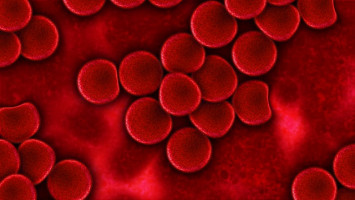
by ecancer reporter Clare Sansom
The Cancer Research UK prize ceremony is always one of the highlights of the NCRI cancer conference, and 2015 was no exception.
Awards are made in three categories: the Future Leaders award for the most promising young Principal Investigators; the Translational Cancer Research prize for multi-disciplinary teams; and the Lifetime Achievement award.
Presenting the awards, the chair of the selection panel, Nic Jones explained that the exceptional quality of the applicants had led them, uniquely, to award three equivalent prizes in the Future Leaders category.
The young scientists so honoured were Peter van Loo from the Francis Crick Institute (see previous post); Chris Bakal from the Institute of Cancer Research in London, for his pioneering work on the genetic and biochemical mechanisms underpinning cell shape; and John Broqnard from the CRUK Manchester Institute for his discovery of novel kinases as potential drug targets.
A team led by Professor Alan Rickinson at the University of Birmingham, working on the development of a vaccine for the Epstein-Barr virus (EBV) won the translational research award.
Jones then introduced the winner of the Lifetime Award achievement, Mel Greaves from the Institute of Cancer Research.
After accepting the award, Greaves gave a wide-ranging plenary lecture describing his forty-year career elucidating the biology and causation of acute lymphoblastic leukaemia (ALL) in children.
He began by paying tribute to great scientists who had been his mentors and role models at the start of his career, including two Nobel laureates, immunologist Peter Medawar (Medicine, 1960) and physiologist Andrew Huxley (Medicine, 1963).
Then, he explained how he first became interested in childhood leukaemia in the 1970s.
At that time, very little was known about the underlying biology of childhood leukaemia, but clinical trials were becoming well organised and these could provide cell samples to work with.
He also formed an emotional connection with the disease through his own small children, then similar in age to many child leukaemia patients, and this has kept him motivated through the inevitable difficult patches in his research.
In these early years, he was involved in defining subtypes of childhood ALL based on the T or B lymphocytes involved; this was one of the first attempts to stratify any cancer type.
In the mid-1980s, with more data available, he was able to draw some interesting conclusions from the age distribution of the commonest type of childhood ALL, 'pre-B cell' ALL.
He saw that there was a peak in occurrence of this subtype in 2- to 5- year old children in advanced economic regions only.
It had been known since the 1920s that leukaemia in some non-human species could be caused by viruses, but this pattern of disease suggested something very different.
It triggered the idea that an immune dysfunction caused by a lack of exposure to infectious agents might be one cause of this leukaemia, a hypothesis that only makes sense in the context of both immunology and evolutionary biology.
He speculated that there might be two mutational 'hits' involved in the onset of leukaemia, one arising in utero and the second in response to a 'delayed' infectious stimulus.
Some support for this hypothesis came from the observation that there was an inverse correlation between social contact in the first year of life and leukaemia risk.
His later work implicated a fusion between two genes, ETV6 and RUNX1, in the development of many cases of this type of leukaemia.
Studies of pairs of twins who both developed ALL showed that both twins carried the same 'founder' mutation, although the other mutations in their cancer cells differed.
The genomes of healthy twins of affected children, whose risk of developing leukaemia is estimated at about one in 10, also contain founder mutations.
Greaves has now been able to put together a pathway leading from an aberrant response to infection to the development of ALL, and he commented that this was much simpler than the similar pathways that have been proposed for other cancers.
In ending his talk, he paid tribute to a late colleague at the ICR, Chris Marshall (1949-2015) who had been a previous winner of this award.
Earlier in the afternoon, Richard Treisman of the Francis Crick Institute had also paid tribute to Marshall and to cell biologist Alan Hall (1952-2015) when presenting the BACR Tom Connors lecture on the consequences of activating the Ras and Rho signal transduction pathways.
Click here to read more from Prof Greaves with his co-authored ecancer paper on: Childhood leukaemia and lymphoma: African experience supports a role for environmental factors in leukaemogenesis.
Watch an interview from 2009 with Prof Greaves on 'The Darwinian view of cancer’ and acute lymphoblastic leukaemia.
The World Cancer Declaration recognises that to make major reductions in premature deaths, innovative education and training opportunities for healthcare workers in all disciplines of cancer control need to improve significantly.
ecancer plays a critical part in improving access to education for medical professionals.
Every day we help doctors, nurses, patients and their advocates to further their knowledge and improve the quality of care. Please make a donation to support our ongoing work.
Thank you for your support.